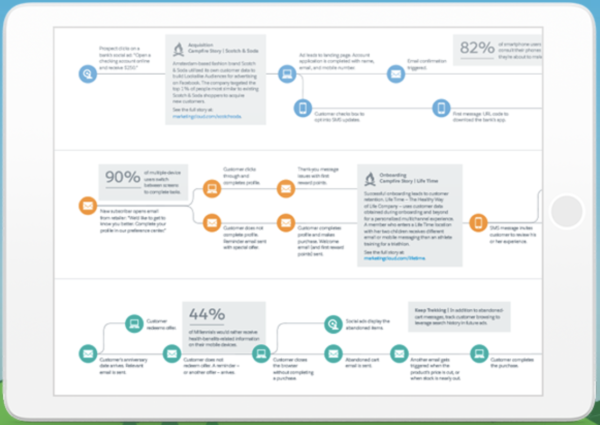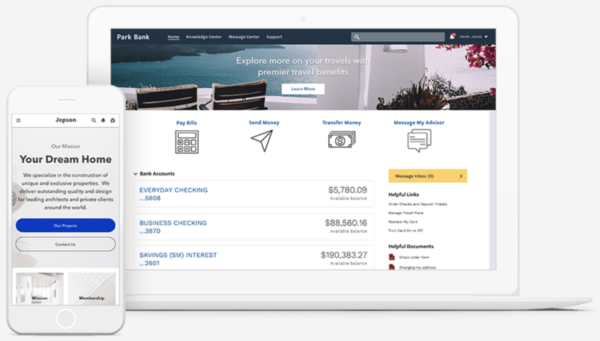How to Drive Value to Customers with the Salesforce Experience Cloud
In the modern world of rich digital experiences, nearly all customers – 86% – will pay more for a higher quality experience. As customer experiences continue to expand further into an evolving landscape of digital touchpoints, maintaining a coherent strategy for reaching customers where they are with personalized, relevant content has become increasingly challenging. In the world of customer relationship management (CRM), Salesforce Experience Cloud addresses precisely this challenge.
Customers know that businesses collect and use personal data generated through interactions and transactions. While most have some concerns over privacy controls, nearly two-thirds expect to see that data used for their benefit in the delivery of personally tailored engagement and content. Meeting this expectation requires adopting the right tools to leverage the power of personalization. Learn how Salesforce Experience Cloud can help you deliver engaging personalized experiences to your customers.
What is Salesforce Experience Cloud?
Salesforce Experience Cloud is an extension of the Community Cloud released in 2020. Built into the Salesforce Software-as-a-Service (SaaS) network, Experience Cloud provides Salesforce users with an integrated digital experience platform to create continuous and connected digital experiences for customers across devices and applications.
In effect, Experience Cloud users can create digital content in one place and deliver it seamlessly in a low to no-code drag-and-drop interface wherever they want. Experience content is maintained on Experience Sites. Experience Cloud Sites can sync content presentation and user experiences across:
- Websites
- Portals
- Mobile Apps
- Storefronts
- Embedded Social Media Advertising
Experience Cloud’s Journey Mapping Feature

To better understand the purpose of Experience Cloud, it helps to look at the problem it tries to solve. In our fast-paced digital world, most people suffer from an excess of information and content, rather than a lack of it.
Experience Cloud addresses the problem of information overload through personalization. It treats the digital personas users create through interactions as people and tries to speak directly to them. Salesforce calls the feature that drives this personalization process journey mapping. Journey mapping analyzes the accumulated attributes of a user – an employee, a customer, a partner – and tries to serve them relevant content that might not surface in the course of their own journey through searches and links. Experience Cloud leverages personalization to guide users into better, more coherent digital experiences.
Experience Cloud Platforms
Once you’ve added Experience Cloud to your Salesforce services, you can choose from four different platform types based on your company’s needs and goals. These are:
- Customer Service
- Partner Relationship Management
- B2B Commerce
- External Apps & Portals
6 Customer Benefits of Using Salesforce Experience Cloud
From the perspective of customer experience, Salesforce Experience Cloud drives end-user value in six ways.
1. Maintain Customer Engagement
In a digital marketplace where 78% of customers and buyers prefer omnichannel communication, engaging customers where they are digitally has become integral to reducing churn and building lasting customer relationships. Experience Cloud helps you reach your customers where and how they want to be reached and provide them statistically more relevant content when you do. By maintaining engagement, you improve overall customer satisfaction and customer lifetime value.
2. Enable Self-Help in Personalized Customer Portals

In Experience Cloud, users can search their own self-service portals for answers to specific problems. Experience Cloud will populate their queries with solutions based on the user’s or customer’s personal data and with connections to potentially helpful user communities. Equipped with these tools, users get to the solutions they need faster, freeing up your customer service agents to intervene where they are more needed.
3. Refine Your Brand
In Experience Cloud, marketing assets populate uniquely for different users based on their profile data. As profile data evolves, it updates Salesforce with relevant changes. In this way, Experience Cloud keeps content and branding aligned throughout Salesforce clouds without the need for manual updates.
4. Enhanced User Security
As a corollary of personalization, Experience Cloud also helps companies implement custom security levels. At the administrator level, companies can monitor how data is used in the cloud. As users typically only see their own personalized data, administrators can selectively flag general informational content that will be visible regardless of the user. Likewise, administrators can also write specific rules for user-generated content, reflecting the company’s content moderation policies and restricting the delivery of inappropriate or unsolicited content to users.
5. Streamline Processes for Applications and Requests
As large organizations manage incoming information on more than 700 custom applications, new applicants who don’t yet have accounts or customers requesting information through unfamiliar channels often get lost in the stacks. Experience Cloud works well as a process automation tool in these cases. It allows all users to create accounts and track the status of their applications or requests. In the meantime, the user’s Experience portal can suggest relevant FAQs, articles, and connections to other related communities.
6. Reduce Manual Data Entry
71% of office professionals feel that they spend too much time on manual data reporting. While complete and accurate data is vital to the health of any organization, burdening your teams with outdated methods of manual entry and reporting can detract from their ability to perform their jobs well and focus on clients. Experience Cloud can shift the flow of information away from emails and form submissions and give your teams a real-time hub for collaboration with complete visibility for all users.
Get the Expertise You Need to Leverage Experience Cloud with Rainmaker
At Rainmaker, our team of experts has 18+ years of technical expertise in creating value in the Salesforce platform in all clouds and features.
To chat with a team member and learn what Rainmaker can do for you, contact us today.






